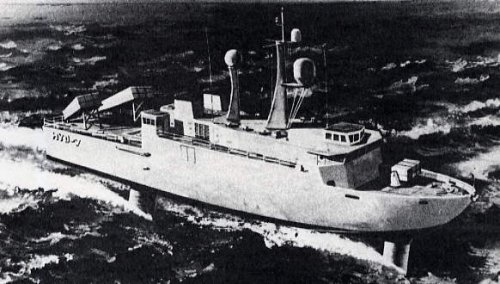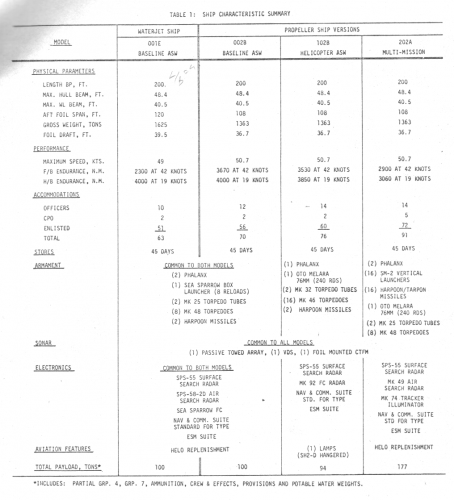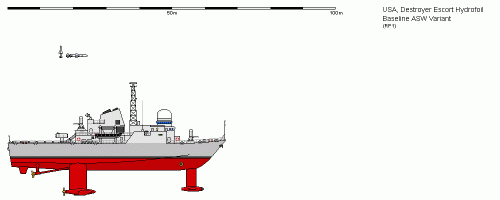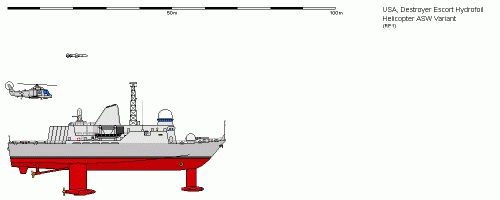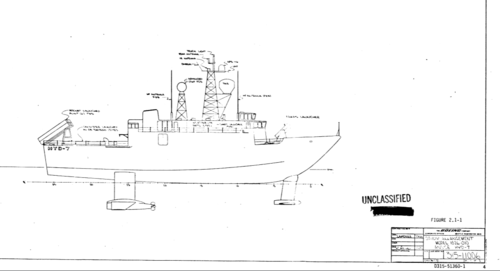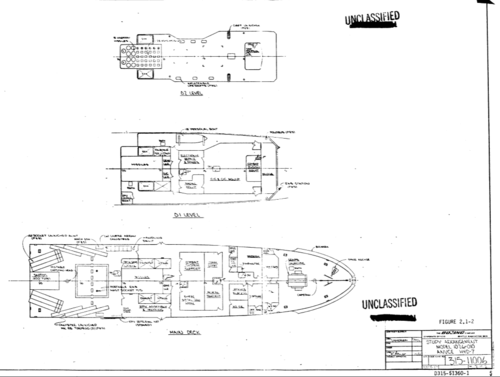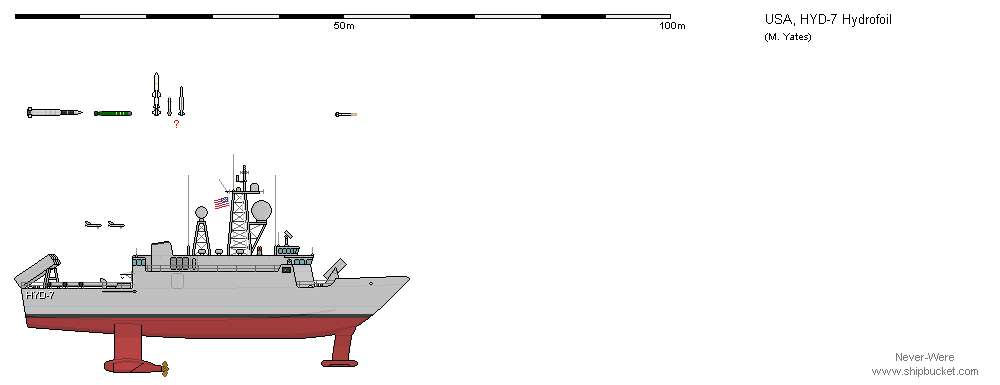Looking for a small ship shore, I found an old project of the USNavy, which does not pass its planning phase, so I've found, is a hydrofoil with the aim of supporting and escorting convoys, I could not find drawings or diagrams official a few images taken from Shipbucket, there are few references on the internet.
I would be very interested to find details of weapons systems, radars, and their main characteristics.
As always, I would like to have all the information possible in order to test these units in several meetings simulated to see its potential use or their capabilities, face a variety of threats.
Found in http://www.kunzrucentre.org/hydrofoil.htm
Shipbucker diagrams:
Baseline ASW variant

Helicopter ASW variant

I would be very interested to find details of weapons systems, radars, and their main characteristics.
As always, I would like to have all the information possible in order to test these units in several meetings simulated to see its potential use or their capabilities, face a variety of threats.
Found in http://www.kunzrucentre.org/hydrofoil.htm
The DEH: The US Advanced Naval Vehicles Concept and Evaluation Study has concluded, based on a design study carried out by Boeing that the present state of the art permits the construction of a 1,300 ton Destroyer Escort Hydrofoil [DEH], with endurance to cross the Atlantic foil borne, without refueling. The design study revealed that the craft would have a foil borne range of 2,500 to 3,700 nautical miles at 50 knots. There exists a general opinion, that the hydrofoil does not lend itself to exploitation, into the domain of a full blown open ocean escort, with all the attendant implications of long endurance, self maintenance and integration into existing logistic systems. In the opinion of the study, the often discussed ‘size barrier’ ascribed to the hydrofoil has not been adequately challenged, in the context of a real design based on contemporary data. The DEH is designed to have a far greater speed and wave height capability in a seaway, as illustrated in Figure 1 and 2, than a conventional ship. Figure 3 shows the speed capabilities of several types of craft as a function of the sea state. It will be noted that a very large conventional ship, like a nuclear carrier, suffers only a slight degradation of usable speed until the significant wave height is 20 to 25 feet. Conventional destroyers escorts begin to have degraded speeds in 10-foot seas and for significant wave heights of 20 feet can be optimistically credited with an average speed of 15 knots. The large surface Effect Ship with calm water capabilities of 80 knots, must give up much of this performance, in high sea states, for the same reasons as displacement hulls. The 50 knot DEH though not entire immune to rough seas retains its speed because the main hull is decoupled from the sea surface and its seaway response is governed by the design length of the struts and the specific type of dynamic control system employed. There are numerous tactical benefits of the DEH, most notably the fact, that as speed increases, the number of ships required for most tasks decreases, and the number of escorts per task force is smaller. The DEH is conceived with various characteristics from baseline ASW to multi-mission roles. The helicopter ASW profile is shown opposite.
Shipbucker diagrams:
Baseline ASW variant

Helicopter ASW variant


